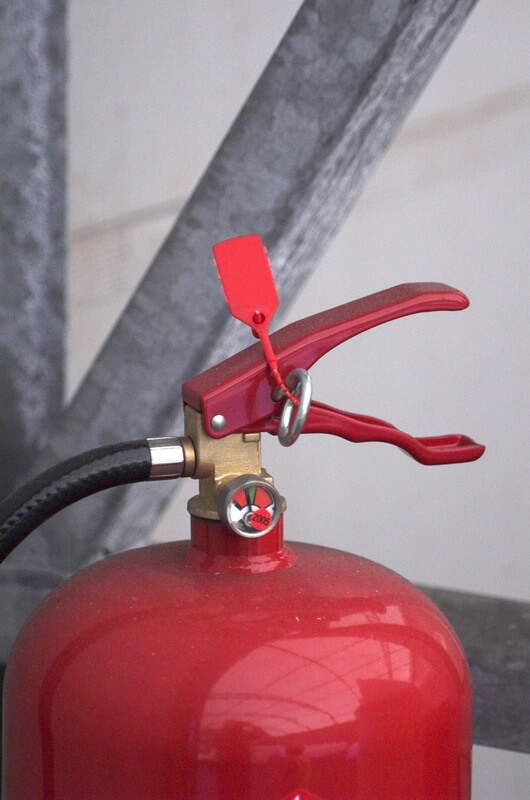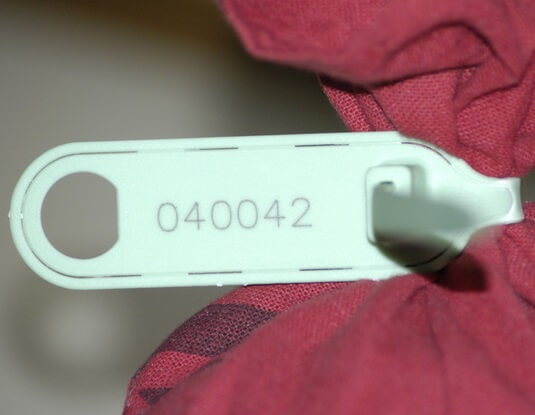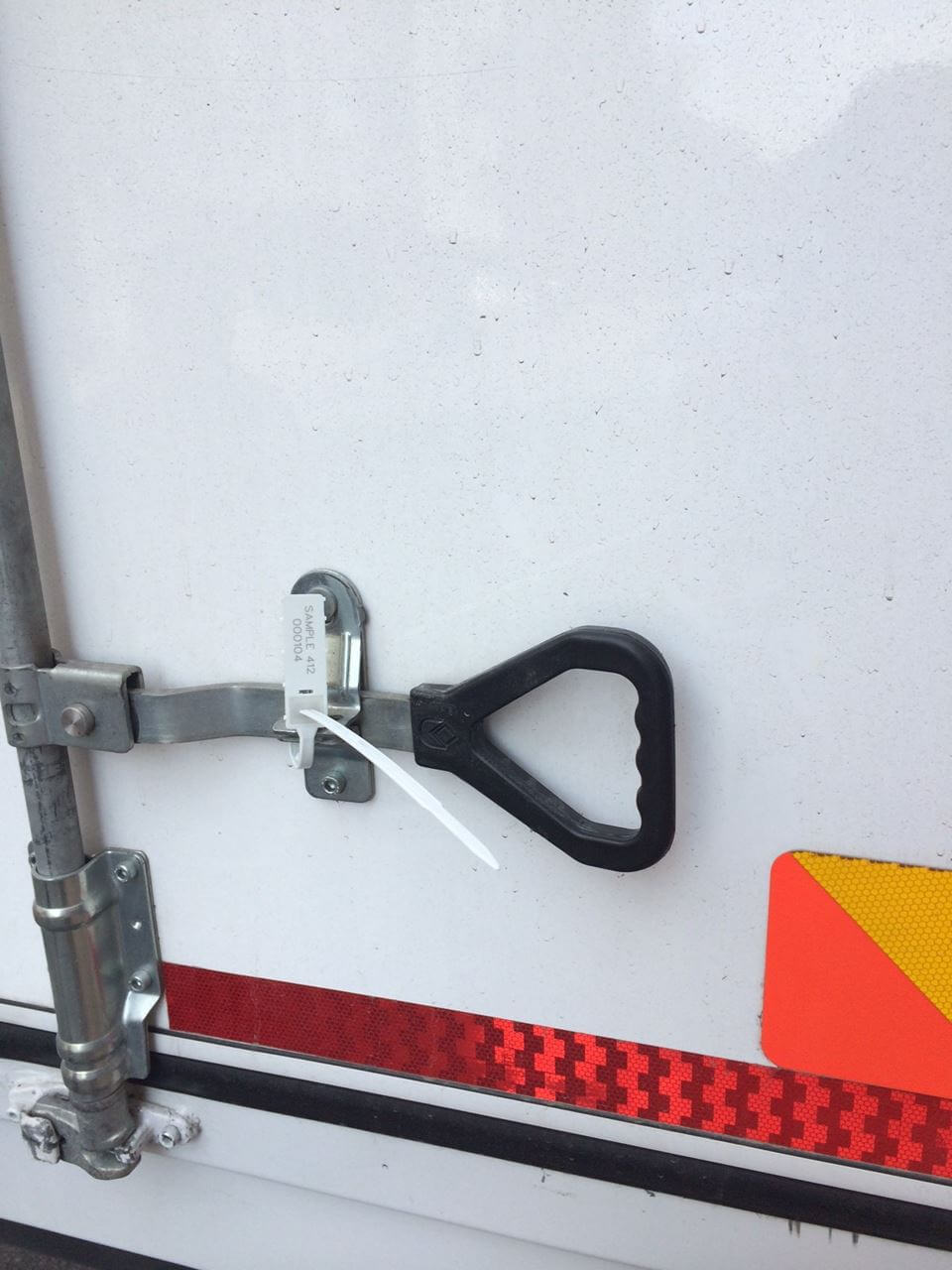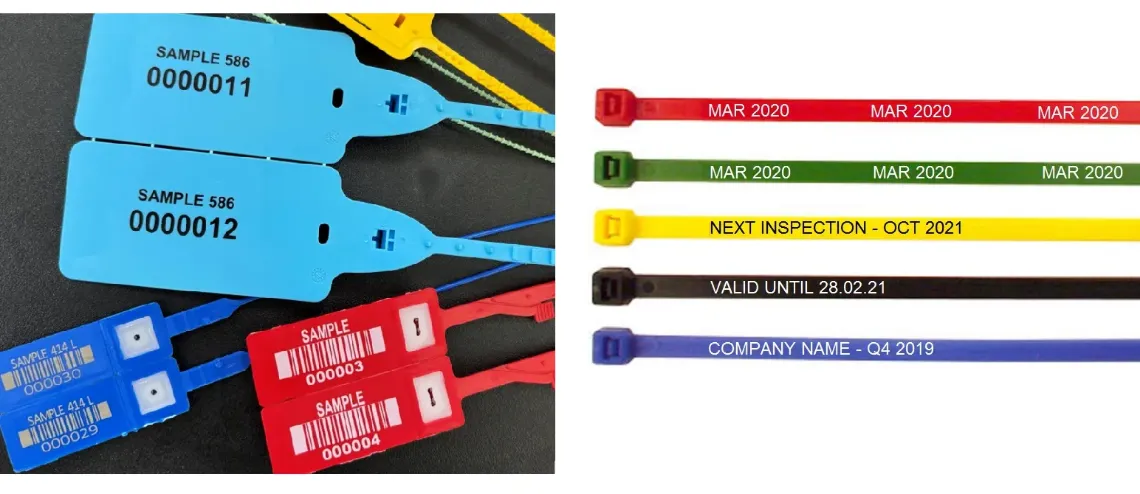Security Seals and Identification Tags: what’s the difference?
To put it simply, security seals are used in applications in which a tamper-evident solution is required to ensure that the sealed items cannot be accessed without the knowledge of the authorised user. Identification ties, on the other hand, are products designed to fasten around bags, boxes and other items to keep them closed – they are not designed to be tamper-proof, although they can be uniquely printed to identify assets or communicate information to a user.
What is a security seal?
Security Seals; as the above suggests, are used to secure something: this could be anything from sealing a locking hasp on a door or a first aid kit, to a shipping container or oil drum.
A true security seal is not exactly designed to stop unauthorised access to something but rather to make it extremely difficult to access a sealed enclosure without the seal showing signs of having been tampered. This is achieved by engineering the security seal – and in particular its locking mechanism – in such a way that external manipulation is very difficult once the seal is in situ (without simply breaking the seal). As an example, our Tracewaste seal features an encapsulated locking mechanism to prevent tampering.
However, tamper-evidence alone isn’t enough. More often than not a security seal will have its own unique serial number. As an example, a logistics haulier might wish to seal curtain-sided lorries with a uniquely numbered security seal; record the particular serial number at its origin; and then ensure that the same seal is intact without signs of tampering at the arrival destination. This reduces the risk that unauthorised users might replace a security seal whilst in transit. As well as sequential numbering, users might opt to use their company logo / other markings to uniquely identify the seal.
Not all security seals are made equal.
Security seals are designed with particular applications in mind. Some seals, such as the Fireseal are designed for very low-break strength and are purely “indicative” in nature. They are easily opened, and particularly suited to applications where immediate access is required: sealing fire extinguishers, medical crash trolleys, and spill kits are all typical examples of their use.
Certain seals are intermediate in nature: combining indicative tamper-evidence with a medium-to-high level of physical strength (for example, featuring a pulling resistance of greater than 40 Kgf). Such seals require removal by way of cutting snips or by way of a specially designed tear-able parts of the seal. Our UNI-412 and UNI-413 seals are examples of such products.
At the other end of the scale, some security seals are designed with much higher physical resistance in mind, so that only specialist bolt and cable cutters are suitable to remove the seal. Specifically, in most cases where shipping containers are being moved internationally, security seals must adhere to the “high-security” ratings applicable within the ISO 17712:2013 standards. For example, our Locktainer 2020SH bolt seal is fully-compliant with ISO17712 and CT-PAT regulations. These regulations ensure that container seals have been rigorously tested for their strength properties and their resistance to common methods of interference.
You can read more about such compliance in our blog: Compliance with C-TPAT and ISO 17712:2013 Standards for High-Security Seals.
Security seals also come in different shapes and sizes. As well as the pull-through plastic seals and high-security bolt seals mentioned above, there are number of key categories for particular uses. For example, cable seals are used as very strong yet flexible, adjustable length seals with high pulling strengths, suitable for heavy-duty applications such as oil drums, high-security shipping, chemical tankers and many more applications.
Yet another type of security seal is our adhesive security labels and tape range, which can be applied to flat surfaces and which, when removed, leaves behind a residue as its tamper evidence. The residue will often have a word repeated in it such as ‘opened’ or ‘void’. Alternatively, the label itself can delaminate, so that this wording appears in the label itself, leaving the applied surface untouched.
Certain types of products also incorporate security seals and tamper-evidence within their design – for example, our re-usable security envelopes and mail pouches incorporate locking mechanisms which can be sealed using disposable security seals which can be snapped off and replaced.
Finally, a growing trend looking forward is towards electronic security:- electronic seals which incorporate technologies such as unique number generation for re-use, GPS trackers and RFID technology. IntelleSeal T is an example of an electronic seal for use on trucks and trailers.
 |  |  |
What are identification ties?
Identification ties and tags are normally used to fasten, enclose and identify a particular object or asset; or to communicate particular information about whatever is tagged.
The emphasis for identification ties is not in tamper-evidence – such ties are not designed to prevent illegitimate tampering. For example, because locking chambers are not designed to be tamperproof they can be manipulated (albeit only intentionally) so that ties can be unfastened and re-closed without the knowledge of the legitimate user.
However, for the likely uses of identification ties this is not a concern because the sealed item does not have intrinsic value; there would not be anything to be gained by tampering with the item. For example, typical uses include bundling or stowing wire cable installations; sealing of waste – including industrial and clinical waste bags; packaging of goods; inspection tagging; industrial equipment and low-value asset tagging. In such applications, the simple design of ties ensures that a solution is provided that is more cost-effective than a more sophisticated security seal.
Where identification is a primary concern of the user, flexibility of tie sizes and printing types also becomes an important consideration. Our range of identification ties are available in many sizes and with different print options – including sequential numbering, printed information, company logos, barcoding and more. For example, our printed cable ties are available in sizes 200x4.8mm, 300x4.8mm and 370x4.8mm to fit the required application. Our printed Tab Ties also offer even greater flexibility, allowing the printing of more detailed information on the tag end of the product, including bespoke barcoding, QR codes and logos as necessary.
If you have any questions about our range of security seals and identification ties, please feel free to give us a call on 01829 760000 or [email protected] to discuss your requirements.

